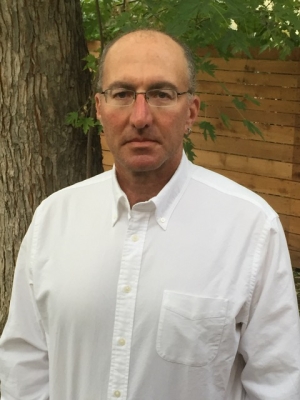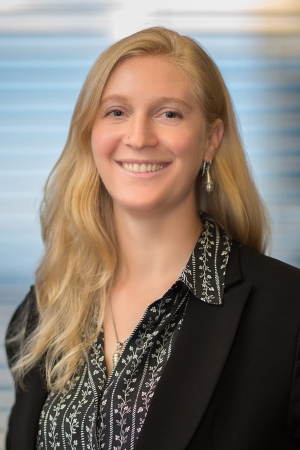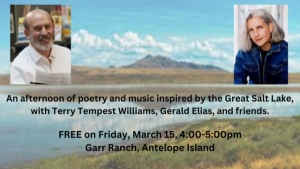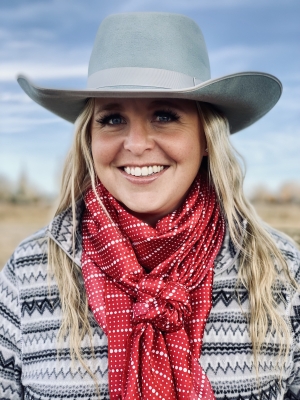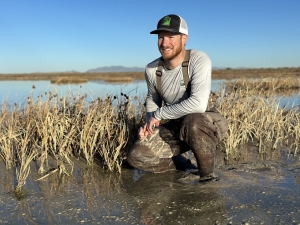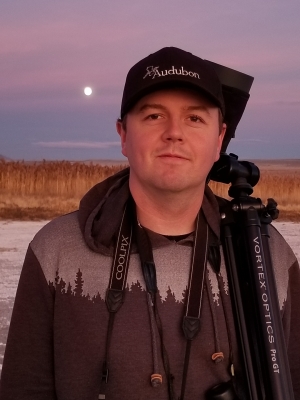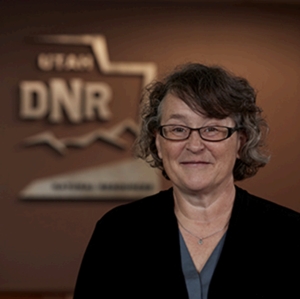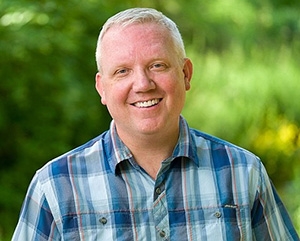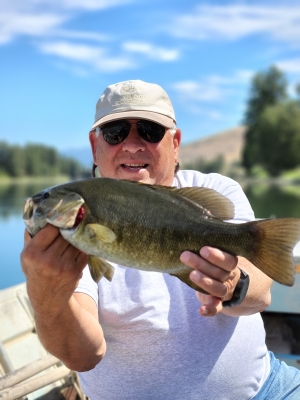Katie
Michael Cohen
Senior Researcher
Pacific Institute
Bio:
Since 1998, Michael Cohen’s work with the Pacific Institute has focused on water use in the Colorado River basin and delta region and the management and revitalization of the Salton Sea ecosystem. Michael received a B.A. in Government from Cornell University and has a Master’s degree in Geography, with a concentration in Resources and Environmental Quality, from San Diego State University.
Title: Lessons from the Salton Sea
Abstract: Decreasing inflows have caused the Salton Sea to shrink by 48 square miles and its surface to drop by 11.5 feet in the past 21 years, increasing dust emissions in the region and impairing public health and the ecosystem. California has completed less than 25% of the habitat and dust suppression projects required to date despite hundreds of millions of dollars of investments and years of effort. What lessons learned from the Salton Sea can be applied to the challenges at Great Salt Lake?
Emily Lewis
Director and Shareholder, Co-Chair of Natural Resources and Water Law Practice Group
ClydeSnow Attorneys At Law
Bio:
Ms. Lewis assists clients in navigating complex water problems. She advises individual water right owners, water conservancy districts, municipalities, mining companies, and mutual shareholder irrigation companies. Her strategic projects practice extends to innovative policy work and specialty project management. She presently acts as the Utah Water Banking Project Manager and hosts Ripple Effect—A Podcast Putting Water in Context.
Title: Utah Water Law: A 5 Year Look Back To Inform Future Action
Abstract: In the last 5 years Utah has made substantial progress in updating critical elements of Utah Water Law. For example, we have updated instream flow provisions, changed beneficial use standards to incentivize water conservation, and greatly enhanced our shepherding capabilities. These investments will allow the State to be more responsive in addressing contemporary issues like drought, population growth, and environmental concerns like water for the Colorado River and Great Salt Lake. To continue our forward trajectory, this presentation will provide a survey of key actions taken to date, discuss how they support a myriad of state water policy efforts, and highlight areas for continued discussion.
3/15: Join Gerald Elias and Terry Tempest Williams at Antelope Island
Friends of the Lake are invited to a very unusual performance, both in program and venue.
Renowned Utah author, conservationist, and activist Terry Tempest Williams has organized a gathering of poets who have been writing poems inspired by the wonders and ecology of the Great Salt Lake.
On March 15, there will be a reading of some of those poems at the Garr Ranch on Antelope Island. One of them will be set to music and performed by local musicians Igor Iachimciuc and Gerald Elias. There will be additional Great Salt Lake-inspired music by composer Matthew Russell Durrant and other members of the University of Utah School of Music.
The one-hour, free performance will take place at 4:00pm on Friday, March 15 at Fielding Garr Ranch in Antelope Island State Park.
Join us for this unique experience, celebrating Great Salt Lake.
William Anderegg
Director, Wilkes Center for Climate Science & Policy, Associate Professor of Biological Sciences
University of Utah
Bio:
Dr. William Anderegg grew up in southwestern Colorado, camping, hiking, and fishing across the deserts and mountains of the southwest. Dr. Anderegg is the director of the Wilkes Center for Climate Science and Policy and associate professor in the School of Biological Sciences at the University of Utah. He joined the faculty at Utah in 2015 and served as an Associate Research Scholar at the Princeton Environmental Institute, Princeton University until 2016. He was a NOAA Climate & Global Change Postdoctoral fellow at Princeton before that. Dr. Anderegg earned a B.A. in Human Biology and Ph.D. in Biology from Stanford University. Dr. Anderegg has been recognized by National Science Foundation’s Alan T. Waterman Award, National Science Foundation Faculty Development Early Career Science Program (CAREER); Blavatnik Foundation National Laureate in Life Sciences, Web of Science Global Highly Cited Researcher; Packard Foundation Fellow for Science and Engineering; and Early Career Fellow of the Ecological Society of America. Dr. Anderegg’s research centers around the intersection of ecosystems and climate change. He studies how drought and climate change affect ecosystems, including tree physiology, ecohydrology, carbon cycling, and nature-based climate solutions. His research spans a broad array of spatial scales and seeks to gain a better understanding of how climate change will affect ecosystems and society in the western US and around the world.
Title: Great Salt Lake Strike Team Data Updates and Policy Summaries
Abstract: In 2023 and 2024, the Great Salt Lake Strike Team synthesized the current scientific understanding of the Great Salt Lake hydrology and water budget within the basin.The reports compiled the most current data about water inputs and losses, past and present, and laid out different scenarios for restoring the Lake to healthy levels. Furthermore, these reports also provide key information about the impacts of future changes in climate and what they mean for restoring and maintaining Great Salt Lake. We will cover the key take-home messages and updates from this data synthesis and provide brief summaries of some of the policy levers to help restore Great Salt Lake.
Hannah Freeze
Program Manager, Agricultural Water Optimization Program
Utah Department of Agriculture and Food
Bio:
Hannah Freeze is the Program Manager for the Agricultural Water Optimization Program with the Utah Department of Agriculture and Food. For over 10 years Hannah has worked closely with private landowners implementing conservation projects on their farms and ranches. A large majority of the work she has completed has been focused on irrigation projects and animal waste projects on dairies and feedlots. Hannah enjoys working closely with farmers and ranchers and takes seriously the opportunity she has to be a voice for agriculture in many different settings. Feedback from farmers is always the best kind and she seeks for it regularly as she strives to guide the Agricultural Water Optimization Program forward.
Title: A Case for Utah Agriculture & How the Agricultural Water Optimization Program is Helping
Abstract: When someone thinks of Utah, agriculture may not be the first thing that comes to mind. But quietly and solemnly in the background of all our lives, Utah’s agriculture moves forward. For the first time in the history of our country, America is importing more food than it is exporting, a fact that should be alarming to all Americans. Investing in local agriculture not only ensures a safe food supply but gives Utah the capacity to provide food and fiber at a very local level.
The Agricultural Water Optimization Program has two goals. First, maintain viable agriculture without increasing depletion. Second, enhance water availability and minimize impacts on water supply, water quality and the environment. This discussion will give a case for maintaining viable agriculture in Utah and how doing so can be mutually beneficial to farmers and Great Sale Lake. It will also touch on the work moving forward in the Agricultural Water Optimization Program and how we can work together to wisely use Utah’s most precious resource.
Click here to learn more about the Agricultural Water Optimization Program.
Keith Hambrecht
Invasive Species Coordinator
Division of Forestry, Fire and State Lands
Bio:
Keith has been with the Utah Division of Forestry, Fire and State Lands since 2016. His work focuses on large scale management of ecosystem altering invasive vegetation and native vegetation restoration. After receiving his BS/MS in engineering from University of Utah in 2011, he left engineering behind to pursue his interests in public land management and ecological restoration. Keith grew up in Massachusetts and moved to Utah in 2005 to ski, bike, and hike the mountains of the West.
Title: Strategic management, innovative research, and strong collaborations drive the success of Phragmites control and wetland restoration in a new water reality
Abstract: Great Salt Lake wetlands are a critical part of the world-renowned Great Salt Lake ecosystem. The valuable role these wetlands play, however, is under threat due to dewatering, hydrologic extremes, and invasive species. Yet, solutions developed to effectively manage and restore these wetlands can serve as a model for other wetlands around the world facing similar impacts. Here, we highlight recent successes and ongoing challenges for the management and restoration of Great Salt Lake wetlands. We emphasize the essential role that collaborations across management agencies and land owners have played in ongoing progress as well as unique partnerships between managers and researchers. We focus on the omnipresent impacts of the invasive, non-native grass phragmites; the innovative research program in collaboration with many agencies that helped refine today’s management strategies; and the massive, highly coordinated management program that is yielding greatly reduced phragmites cover throughout the watershed. However, water shortages will hinder further reductions in phragmites as will landowners who are unable or unwilling to manage their invasive species. We then turn our attention to the restoration of native plant communities, the essential next step in recovering these degraded wetlands and the habitat they provide. Active revegetation in wetlands has lagged behind progress made in invasive species management but opportunities abound to develop and refine best practices for seeding and planting, with researchers and managers again working in collaboration. Questions such as which species to introduce, at what density and time of year, and with what seed pre-treatments are being addressed in ongoing restoration experiments. Looking ahead, water availability will constrain how much wetland habitat can be restored through seeding and planting, as will access to diverse native wetland seeds that are affordable. We remain optimistic about the future of Great Salt Lake wetlands but underscore the vital importance of securing sufficient water, obtaining enough funding, and supporting strong collaborations for effective management and restoration.
Max Malmquist
Engagement Manager, Saline Lakes Program
National Audubon Society
Bio:
Max Malmquist is the Engagement Manager for the National Audubon Society’s Saline Lakes Program, based in Salt Lake City, Utah. He works toward the Saline Lakes Program’s vision of “healthy saline lake ecosystems with reliable water supplies to sustain both birds and people.”
Max has a diverse background in community relations, project management, negotiations and environmental monitoring. He is an avid birder and wildlife photographer who enjoys sharing his passion for birds with others. Max is a voting member of the Utah Birds Records Committee, lead coordinator for the Intermountain West Shorebird Surveys, and regional editor for the state of Utah’s Christmas Bird Count Circles.
Title: Flyway-scale Partnerships to Count Shorebirds at Great Salt Lake and Beyond
Abstract: Wetlands and saline lakes in the Intermountain West are essential habitats that fuel the shorebird migration up and down the Pacific Flyway. Many of these habitats have been lost to drought and development and shorebird populations are in decline. For 30 years, there has been no census of migratory shorebirds throughout the Intermountain West because organizing a massive survey during short time windows is logistically challenging. Through a large partnership that includes National Audubon Society, Sageland Collaborative, and the Utah Division of Wildlife Resources, a region-wide census of migratory shorebirds at over 200 sites across 11 states began in August 2022. With this data, we can understand how many shorebird are crossing our region, what sites are of most value, and how migration is shifting with a changing water supply. Working together in a partnership and at scales relevant to shorebird populations, wildlife managers can prioritize sites for conservation and restoration actions. This is especially important at Great Salt Lake, which supports significant portions of the Pacific Flyway's shorebird populations and neared ecological collapse in late 2022.
Teresa Wilhelmsen
Utah State Engineer – Division Director
Division of Water Rights
Bio:
Teresa Wilhelmsen was first appointed Utah State Engineer in 2020 by Governor Gary Herbert. She is responsible for the general administrative supervision of all waters of Utah and the measurement, appropriation, apportionment, and distribution of those waters. She is also the Director of the Division of Water Rights.
Wilhelmsen joined the Division of Water Rights in 1997. Prior to her appointment, she most recently served as an Assistant State Engineer and the Division’s administrative hearing officer. She was the Regional Engineer for the Utah Lake and Jordan River Regional Office, and managed the Division’s adjudication program. By Gubernatorial appointment, she is currently an Alternate Commissioner for the Upper Colorado River Commission and a Utah Council Member for the Western States Water Council. She also serves as a commissioner for the Bear River Commission and is chair of Utah’s delegation to facilitate the compact.
Wilhelmsen is a Utah native and lifelong student of the west, focusing especially on water. She is an advocate of the prior appropriation doctrine and its adaptability to current water issues. Throughout her decades long career of public service, she has become recognized for creatively resolving increasingly complex competing demands for our limited water resources. During her tenure with the Division she got her boots wet (literally) as she has managed the use, measurement and distribution of both surface and groundwater. She is leading Utah’s team to finalize the Utah Navajo Water Rights settlement and is working on other federal reserve water rights settlements. She is a trusted partner with water managers, lawmakers, agricultural producers, tribal negotiators and environmental stakeholders to shape Utah water rights laws, ensure compliance with interstate river compacts and agreements, and help Utah prepare for the future. She associates with various professional organizations to teach the principles of water rights law in Utah and makes time to meet with water users.
Before joining the division, Wilhelmsen worked for the School and Institutional Trust Lands Administration and Utah Division of Forestry. She is a professional engineer and graduated from the University of Utah with a degree in civil and environmental engineering.
Title:
Abstract:
Brian Steed
Great Salt Lake Commissioner
State of Utah
Bio:
Brian Steed is the Executive Director of Utah State University’s Janet Quinney Lawson Institute for Land, Water, and Air and the Inaugural Great Salt Lake Commissioner appointed by Governor Spencer J. Cox. Brian began his position at USU in July 2022, with a goal of connecting USU researchers and programs with government and public partners to address concerns on natural resource issues. As GSL Commissioner, Brian serves the governor and state of Utah in conjunction with his position at the institute.
Prior to his current roles, Brian served as the Executive Director of the Utah Department of Natural Resources, heading that agency after his appointment in 2019 by then Governor Gary Herbert.
Brian also served as the U.S. Bureau of Land Management’s deputy director for policy and programs and exercised authority of the director from 2017-2019. He was the chief of staff to Utah Congressman Chris Stewart from 2013-2017. Steed also previously served as the deputy county attorney for Iron County and taught political science and economics at USU.
Returning to USU as Executive Director for the JQL Institute for Land, Water, and Air felt natural to Brian. Hailing from Logan, Utah, Steed first attended USU where he earned both a Bachelor of Arts and Master of Arts in political science. He earned a Ph.D. in public policy with emphasis in environmental policy from Indiana University Bloomington and a J.D. from the S.J. Quinney College of Law at the University of Utah, with a certificate in natural resources and environmental law.
Steed and his wife, Leslie, have three children. He enjoys almost any outdoor activity, including hiking, biking, fishing, camping, and skiing.
Established in 2021, the Janet Quinney Lawson Institute for Land, Water, and Air connects researchers from Utah State University with problem solvers and decision-makers around Utah. The institute envisions a state with a high quality of life for our citizens that values and optimizes our state’s shared resources while managing continued growth. We value data-driven decision-making, shared partnerships, and a non-partisan perspective as we share the latest land, water, and air research.
For more information on the Institute for Land, Water and Air, please visit:
Institute of Land, Water, and Air | USU
Title:
Abstract:
Gary Belovsky
Professor emeritus, Department of Biological Sciences
University of Notre Dame
Bio:
Education:
B.B.A. University of Notre Dame 1972
M.F.S. Yale University 1974
Ph.D. Harvard University 1978
Post-doctoral appointments:
Harvard Society of Fellows (1976 – 1980)
University of Washington (1978-1980)
Faculty Positions:
1980 – 1992 University of Michigan
1992 – 2001 Utah State University
2001 – 2019 Gillen Director, University of Notre Dame Environmental Research Center
Research at National Bison Range, MT (1978 – 2019).
Research on Great Salt Lake, UT since 1994.
Title: Modeling Great Salt Lake Nitrogen Cycling
Abstract: Nitrogen limits production of phytoplankton and microbialite primary producers in Great Salt Lake, which in turn limits the abundance of brine shrimp and brine fly larvae that attract abundant waterbirds. Therefore, nitrogen cycling is critical for understanding the lake’s ecology. Nitrogen cycling has been incorporated into the Great Salt Lake food-web model that has previously been presented here. To accomplish this, each food-web component’s tissue and excrement nitrogen content, production rate, death rate, and decomposition rate were measured. The model is then solved for monthly nitrogen in the water column within a year and between years, which is compared to the observed lake value and found to be similar. Brine shrimp fecal pellets were identified as a major component of the nitrogen cycle. The fecal pellets decompose slowly and sink rapidly, which largely leads to benthic deposition on microbialites or deeper. If deposited on microbialites, fecal pellets can be consumed by brine fly larvae, which accelerates their nitrogen release to the water column or supports high primary production by microbialites. If deposited deeper, fecal pellets release their nitrogen very slowly into the water column or even more slowly if a deep brine layer exists and the pellets enter it.

